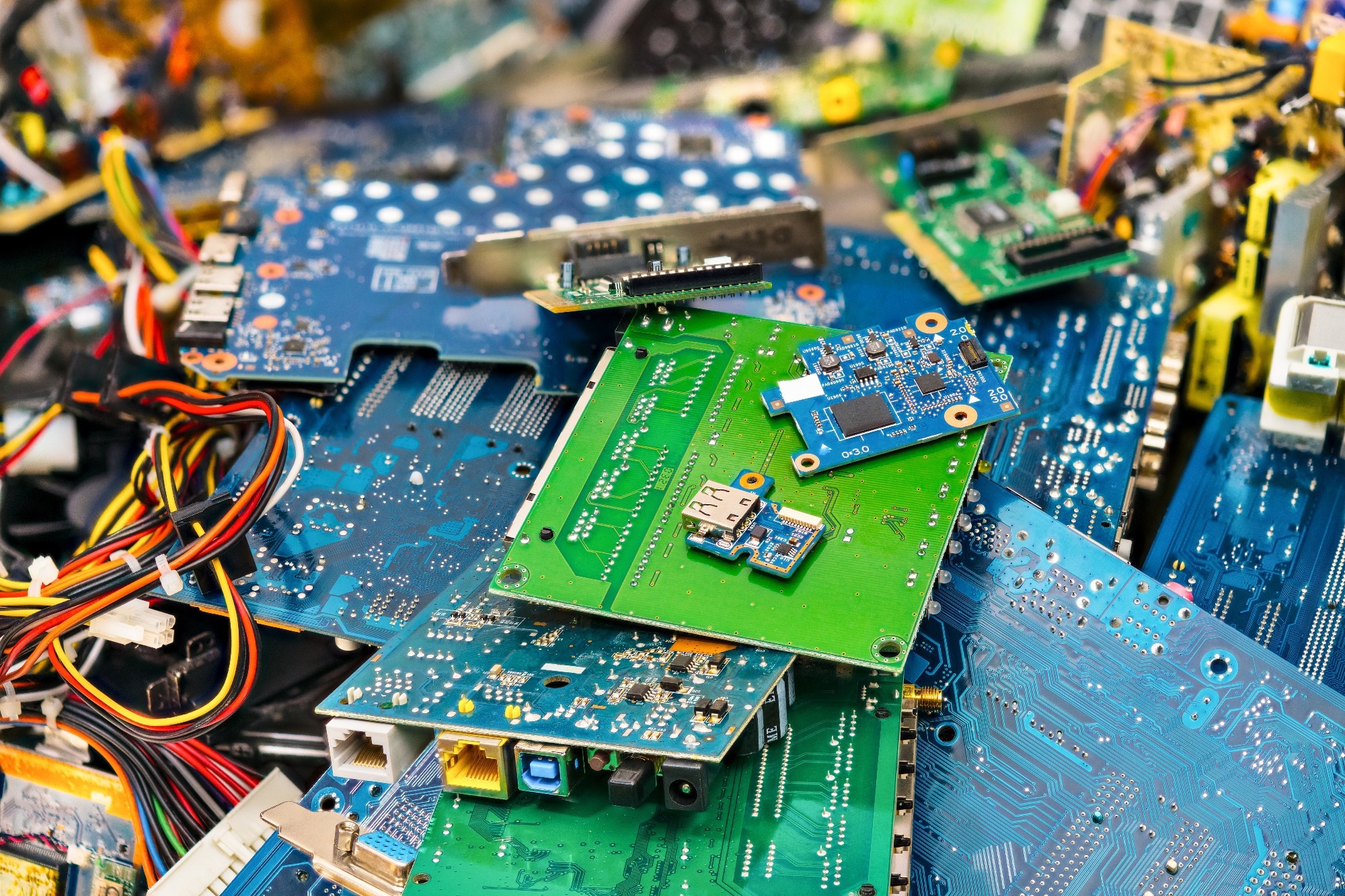Electronic waste, or E-waste, has emerged as a pressing concern in society due to its adverse environmental impact. However, recent research has demonstrated that E-waste can serve as a reinforcement material in concrete, offering a promising avenue to address both the challenges of e-waste disposal and the construction industry’s sustainability goals.

Image Credit: KPixMining/Shutterstock.com
The increasing disposal of electronic devices worldwide has resulted in the accumulation of hazardous substances like cadmium, mercury, and lead in our environment. This not only endangers the health of workers in this sector but also highlights a deficiency in recycling infrastructure.
Since 2014, there has been a staggering 20% increase in global E-waste generation, necessitating urgent solutions to safeguard our environment and the well-being of individuals involved in handling E-waste. 1
Additionally, there is a strong demand for increased sustainability in the construction industry. In 2021, the construction industry accounted for 37% of process-related carbon emissions. The industry also consumes around 40% of raw materials globally.2 Therefore, there is increasing pressure on the industry to adopt sustainable solutions.
Concrete Reinforcement With Waste Printed Circuit Board (WPCB) Fibers
Waste Printed Circuit Boards (WPCBs) consist of a complex blend of fiberglass, copper, epoxy resins, and diverse plastics, alongside valuable metals like gold and silver, exerting pressure on global resources during their production. Moreover, their composition includes hazardous elements like cadmium, mercury, and lead, rendering their disposal a critical concern for environmental health.
The diverse materials that make up WPCBs make them difficult to recycle, requiring specialized technologies in order to minimize the environmental impact of the process. There is also the problem of toxicity, as individuals working in recycling WPCBs must be protected from exposure to toxic materials.
Current methods used to recycle the metals in WPCBs include hydrometallurgical, pyrometallurgical, and mechanical techniques. These techniques, however, are not environmentally friendly, requiring the use of various acids and large amounts of energy.
The improper disposal of WPCBs also has a number of consequences for the environment, from soil and water contamination and air pollution to excessive energy consumption (with a reliance on fossil fuels) and the destruction of habitats.
There is a need, therefore, for sustainable alternatives to current WPCB recycling methods.
Recent research published in the journal Scientific Reports has highlighted how WPCBs can be sustainably recycled as material for concrete reinforcement.
In this study, scientists reinforced concrete with WPCB fibers and evaluated its mechanical and durability properties to establish whether WPCB could be recycled for use in concrete products, establishing a more sustainable recycling method for the material.
The Experimental Journey: Enhancing Concrete Properties
Reinforcing concrete is vital in the construction and engineering sectors as it adds to the material’s structural integrity, strength and load-bearing capacity, durability, flexibility, and versatility, in addition, it prevents cracks and material deformation.
The study revealed that incorporating WPCB fibers into concrete significantly enhanced its mechanical strength. Specifically, incorporating around 5% WPCB fibers into the concrete resulted in significant enhancements in its overall strength.3
Previously, the strength-enhancing effect of adding WPCB fibers to concrete had been confirmed by response surface methodology (RSM) studies, although these studies provided theoretical proof only. The new study provides experimental evidence of the benefit of adding WPCB to concrete.
Implications for Sustainable Construction and Future Prospects
The study results have important implications for sustainable construction. They demonstrate how a difficult-to-recycle and potentially harmful material can be utilized in an industry that heavily relies on the Earth’s resources.
By recycling WPCB fibers into concrete, two key challenges find a resolution. First, the challenge of establishing a more sustainable method of recycling WPCB. Second, the challenge of increasing sustainability in concrete production processes.
By incorporating WPCB fibers into concrete, infrastructure can be strengthened, resource demand can be reduced, hazards can be minimized, and sustainable practices for a safer environment can be promoted.
Paving the Way for Sustainable Construction
The new study may help to empathize the need to explore innovative recycling solutions for the growing volume of e-waste that is produced annually.
The current research is a step towards establishing a more sustainable construction industry, although more still must be done to reduce the impact of this industry on the environment. It is important that stakeholders invest in research so that eco-friendly practices can replace traditional practices that are detrimental to our world.
References and Further Reading
- Madkhali, H. et al. (2023) A comprehensive review on e-waste management strategies and prediction methods: A Saudi Arabia perspective, MDPI. Available at: https://www.mdpi.com/2673-9585/3/2/12 (Accessed: 04 October 2023).
- Environment, U. (2022) 2022 global status report for buildings and construction, UNEP. Available at: https://www.unep.org/resources/publication/2022-global-status-report-buildings-and-construction (Accessed: 04 October 2023).
- Priyan, M.V. et al. (2023) ‘Recycling and sustainable applications of waste printed circuit board in concrete application and validation using response surface methodology’, Scientific Reports, 13(1). doi:10.1038/s41598-023-43919-9. https://www.nature.com/articles/s41598-023-43919-9
Disclaimer: The views expressed here are those of the author expressed in their private capacity and do not necessarily represent the views of AZoM.com Limited T/A AZoNetwork the owner and operator of this website. This disclaimer forms part of the Terms and conditions of use of this website.